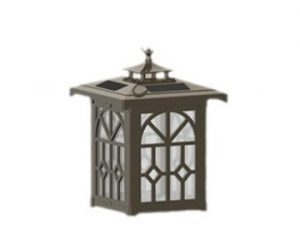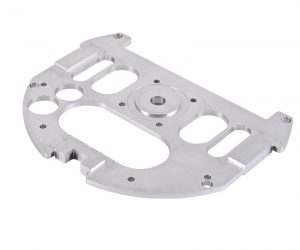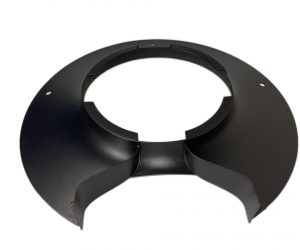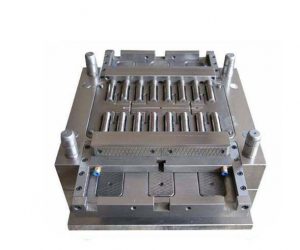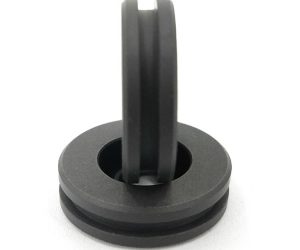Let's dive into how 2 plate injection molding works in today's manufacturing world. We'll check out some cool new design and production methods, and see what's working well and what's still tricky to figure out in this fast-moving field. Whether you're already working with injection molding or just curious about it, we'll break down everything from the basics to the latest tech that's making waves in the industry. Think of this as your go-to guide for getting the hang of what makes 2 plate injection molding tick.
I. Introduction
Hey, so injection molding is basically this super cool way to make stuff that's completely changed how we manufacture things these days. Think of it like this - you take some material, melt it down, and then shoot it into a mold to make whatever shape you want. It's pretty amazing because you can make really detailed parts without breaking a sweat. The best part? It's super efficient, works for all kinds of things, and you can make tons of identical pieces that come out perfect every time.
Now, when it comes to different ways to do injection molding, the 2 plate method is kind of like the go-to choice for a lot of manufacturers. It's really straightforward, won't break the bank, and gets the job done right every single time. What makes it so great is that you can use it to make all sorts of different things - from car parts to the stuff in your phone. It's like the Swiss Army knife of manufacturing - super versatile and reliable!
II. Fundamental Principles of 2 Plate Injection Moulding
A. Working Mechanism
The working mechanism of 2 plate injection moulding involves the use of two plates, the cavity plate and the core plate, which come together to form the mould cavity. The molten material is injected into the cavity under high pressure, filling the void and taking the shape of the mould. The plates then separate, allowing the newly formed part to be ejected. This systematic process ensures efficient and precise production, making it an indispensable technique for complex part manufacturing.
B. Key Components and their Functions
In 2 plate injection moulding, various components play crucial roles in the successful execution of the process. These include the sprue, runner system, gates, and ejector pins, each contributing to the seamless flow of material and the ejection of the final product. The sprue serves as the channel through which the material is introduced, while the runner system facilitates the distribution of the material throughout the mould. The gates control the flow of the molten material into the mould cavity, and the ejector pins aid in the ejection of the finished product from the mould.
C. Material Considerations
Material considerations are integral to the 2 plate injection moulding process, as the choice of materials directly impacts the quality, durability, and functionality of the final product. Factors such as material viscosity, temperature sensitivity, and shrinkage rate must be carefully assessed to ensure optimal moulding conditions. Moreover, the compatibility of the material with the mould's temperature and pressure requirements is crucial for achieving consistent and high-quality production results.
III. Innovative Design Techniques
A. Optimizing Mold Structure
Optimizing the mold structure is a key aspect of enhancing the efficiency and quality of the 2 plate injection moulding process. This involves meticulous design considerations, such as incorporating advanced cooling channels to regulate temperature, implementing uniform venting systems to release air, and integrating precision machining techniques for achieving intricate part geometries. By optimizing the mold structure, manufacturers can minimize production cycle times, reduce material wastage, and enhance the overall quality and consistency of the final products.
B. Enhancing Cooling Systems
Efficient cooling systems are essential for maintaining the structural integrity and dimensional accuracy of the products during the 2 plate injection moulding process. Innovations in cooling system design, such as conformal cooling channels and advanced cooling mediums, play a vital role in achieving uniform cooling rates, minimizing warpage, and preventing the formation of internal stresses within the product. By strategically enhancing cooling systems, manufacturers can significantly improve production efficiency and product quality, leading to cost savings and enhanced customer satisfaction.
C. Advanced Material Selection
The selection of suitable materials is critical for optimizing the performance and functionality of products produced through 2 plate injection moulding. Advanced material selection involves a comprehensive assessment of various material properties, such as mechanical strength, thermal stability, chemical resistance, and environmental sustainability. By leveraging advanced materials, such as engineered polymers, composites, and specialty alloys, manufacturers can enhance product durability, reduce weight, and introduce innovative functionalities, meeting the evolving demands of diverse industries and end-users.
IV. Advanced Manufacturing Techniques
A. Automation and Robotics Integration
The integration of automation and robotics in 2 plate injection moulding has revolutionized the manufacturing landscape, offering unprecedented precision, speed, and efficiency. Automated systems streamline the production process, from material handling and mould changeovers to quality control and product inspection. Robotics facilitate intricate tasks with exceptional dexterity, ensuring consistent part quality and minimizing human errors. By embracing automation and robotics integration, manufacturers can achieve higher production volumes, reduced labor costs, and enhanced overall production efficiency.
B. Industry 4.0 Applications in 2 Plate Injection Moulding
The advent of Industry 4.0 has ushered in a new era of digital transformation and connectivity in 2 plate injection moulding. Incorporating smart sensors, data analytics, and real-time monitoring systems has enabled the implementation of predictive maintenance, optimized production scheduling, and enhanced product traceability. The seamless integration of cyber-physical systems and the Internet of Things (IoT) has empowered manufacturers to achieve unprecedented levels of operational visibility and agility, fostering adaptive production processes and enabling data-driven decision-making for continuous process improvement and product innovation.
V. Challenges and Solutions in 2 Plate Injection Moulding
A. Addressing Material Constraints
The dynamic nature of material properties often presents challenges in the 2 plate injection moulding process. Manufacturers face constraints related to material viscosity, shrinkage rates, and thermal stability, impacting the final product's dimensional accuracy and structural integrity. Implementing advanced material testing and simulation techniques aids in understanding material behavior, enabling the optimization of process parameters to mitigate material-related challenges. Additionally, collaborative partnerships with material suppliers and continuous research and development efforts facilitate the identification of novel materials that address specific application requirements, fostering innovative solutions and expanding the scope of production possibilities.
B. Tackling Complex Geometries
Complex part geometries pose significant challenges in 2 plate injection moulding, often leading to manufacturing inefficiencies and increased production costs. Overcoming these challenges requires the implementation of advanced mould design and simulation tools that enable the visualization and analysis of intricate part geometries prior to production. Utilizing advanced mould flow analysis and 3D printing technologies facilitates the identification of potential design flaws and the optimization of mould configurations, ensuring optimal material flow and uniform filling during the injection moulding process. By leveraging innovative design methodologies and advanced manufacturing technologies, manufacturers can effectively tackle complex geometries, streamlining production processes and enhancing product quality.
C. Overcoming Production Limitations
The presence of production limitations, such as cycle time constraints, equipment capacity, and resource allocation, often hinders the scalability and efficiency of 2 plate injection moulding operations. To overcome these limitations, manufacturers can implement advanced production planning and scheduling systems that optimize production cycles and maximize machine utilization. Adopting lean manufacturing principles and implementing continuous improvement initiatives facilitate the identification and elimination of production bottlenecks, fostering streamlined operations and enhancing overall production throughput. By embracing a holistic approach to process optimization and resource management, manufacturers can effectively overcome production limitations, driving operational efficiency and fostering sustainable growth.
VI. Latest Advancements and Future Prospects
A. Emerging Technologies in 2 Plate Injection Moulding
The continuous evolution of 2 plate injection moulding is marked by the emergence of cutting-edge technologies that revolutionize the manufacturing landscape. Advanced mold surface coating technologies, multi-material injection moulding capabilities, and intelligent process control systems are among the forefront advancements shaping the future of the industry. These innovations enable the production of complex, high-performance parts with enhanced functionality and durability, catering to the ever-evolving demands of various industries, including automotive, aerospace, and consumer electronics.
B. Potential Innovations on the Horizon
As the industry continues to evolve, the horizon is ripe with potential innovations that hold the promise of transforming 2 plate injection moulding into a more versatile, efficient, and sustainable manufacturing process. Anticipated innovations encompass the integration of bio-based materials, additive manufacturing techniques, and the application of artificial intelligence and machine learning algorithms in process optimization and predictive maintenance. Moreover, the development of fully automated, self-monitoring production lines and the integration of circular economy principles are expected to drive the industry towards greater sustainability and resource efficiency, shaping a future characterized by enhanced product customization, reduced environmental impact, and unprecedented manufacturing agility.
VII. Conclusion
A. Key Takeaways from the Analysis
Through the comprehensive analysis of 2 plate injection moulding, it becomes evident that the successful implementation of innovative design and manufacturing techniques is pivotal in overcoming the inherent challenges and limitations of the process. The integration of automation, robotics, and Industry 4.0 applications has transformed traditional manufacturing paradigms, fostering unprecedented levels of efficiency, productivity, and product quality. Addressing material constraints, tackling complex geometries, and overcoming production limitations require a holistic approach that emphasizes continuous research and development, collaborative partnerships, and the adoption of advanced manufacturing technologies.
B. Implications for the Industry's Future
The implications for the future of the industry are characterized by a transformative shift towards sustainable, agile, and technologically advanced manufacturing processes. Embracing emerging technologies and fostering a culture of innovation and collaboration are paramount in driving the industry towards enhanced product customization, reduced time-to-market, and minimized environmental impact. As the industry continues to evolve, the emphasis on material innovation, process optimization, and digital integration will play a pivotal role in shaping a future defined by unparalleled manufacturing capabilities and a sustainable, resilient manufacturing ecosystem.
